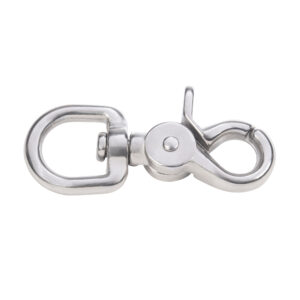As you dive deeper into scuba diving and gear up to embark on your aquatic adventures, selecting the right equipment will be super important on your to-do list. Besides the obvious big-ticket items such as masks, fins, buoyancy control devices (BCDs), and tanks, there exists a critical but easily overlooked component in your diving arsenal: CLIPS! Finding the right clip to hold your diving accessories, like GoPros, cameras, dive lights, and octos can be challenging. In this comprehensive guide, we’ll explore how to choose and use scuba diving clips effectively to ensure a safe and enjoyable dive.
The Underrated Role of Scuba Diving Clips
When we speak of scuba gear, the humble clip doesn’t usually top the conversation, yet it is as crucial as any other piece of equipment you possess. In the underwater realm, where streamlined movement and secure gear are key, clips silently hold the fort. They affix your crucial accessories—flashlights, reels, dive computers, cameras, slates—maintaining your dive safety and efficiency. Well-chosen clips reduce the risk of entanglement or loss of gear, allowing you to focus on the experience of exploring beneath the waves, while keeping your equipment and accessories secure and close at hand.
The Various Types of Scuba Diving Clips
As you delve into the realm of scuba clips, you’ll be surprised at the diversity. Depending on the type, weight, and size of your gear and the environment you plan to dive in, different clips will come into play. Let’s become acquainted with some of the more popular types:
Bolt Snap Clips:
A favorite in the scuba diving world, bolt snaps are sturdy, capable of handling heavy loads. They feature a reliable bolt closure system that comes in varying sizes and styles to suit different diving needs. From the single-ended swivel eye bolt snap that is ideal for attaching items directly to a D-ring to the double-ended bolt snap that seamlessly links two items or equipment with built-in connection points, bolt snaps are built for demanding diving conditions and heavier gear.
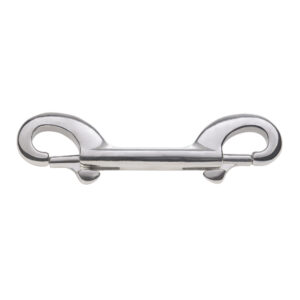
Spring/Trigger/Lobster Clips:
These heavy-duty clips boast a unique spring-loaded mechanism, making them comparable to a swivel eye bolt snap. They are typically used alongside a string to attach equipment and can be an excellent choice for gear that requires a secure connection.
Plastic Clips:
Predominantly found on BCDs, these clips are used to connect the main belt and fasten shoulder straps. Plastic clips are user-friendly, making them ideal for beginners. However, they are less durable than their metal counterparts, which is something to consider for more advanced or demanding dives.
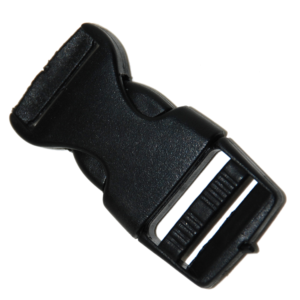
Velcro Clips:
As the name suggests, these clips feature a Velcro mechanism. Lightweight and easy to attach or remove, Velcro clips are perfect for gear that you may need to detach quickly or extend from a lanyard while diving.
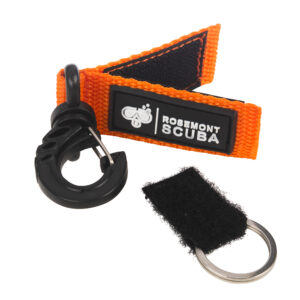
Carabiner Clips:
These are lightweight and easy to attach, making them a practical option for many divers. However, their inward-opening latch/gate can pose a potential risk for entanglements, so use them cautiously.
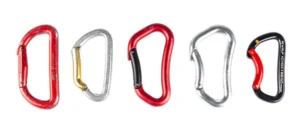
Butterfly Clips:
Resembling a swivel eye bolt snap, these clips feature a butterfly-shaped closure mechanism. While they can provide a solid connection, their design does have a risk of accidentally attaching to objects, particularly line and rope.
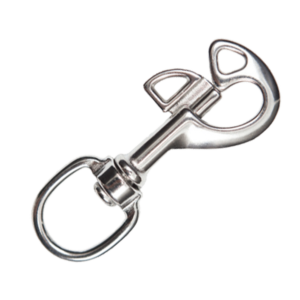
Picking the Right Clip for the Right Environment
Choosing the right clip isn’t just about your gear, it also involves considering your diving environment. Are you diving in areas with strong currents or high risks of entanglement like discarded fishing lines or netting? You’ll need durable, reliable clips that can withstand these challenges. When you are unsure – a bolt snap clip is often the go-to,
Here is a summarized table for the choice of clips in scuba diving:
Type of Clip | Key Features | Ideal Usage |
Bolt Snap Clips | Sturdy, handles heavy loads, reliable bolt closure system, single and double-ended versions available | Ideal for demanding diving conditions and heavier gear |
Spring/Trigger/Lobster Clips | Heavy-duty, spring-loaded mechanism, used alongside a string to attach equipment | Excellent for gear that requires a secure connection |
Plastic Clips | User-friendly, predominantly found on BCDs for connecting the main belt and fastening shoulder straps | Ideal for beginners, but less durable for advanced or demanding dives |
Velcro Clips | Lightweight, easy to attach/remove, Velcro mechanism | Perfect for gear that you may need to detach quickly or extend from a lanyard while diving |
Carabiner Clips | Lightweight, easy to attach, practical | Be cautious of potential risk for entanglements due to inward-opening latch/gate |
Butterfly Clips | Resemble swivel eye bolt snap, butterfly-shaped closure mechanism | Provide solid connection, but have a risk of accidentally attaching to objects, particularly line and rope |
This table should give you a quick glance at the various types of clips available, their key features, and the ideal usage for each.
The Art of Attaching Your Gear
Once you’ve selected the right clip, the art lies in attaching your gear effectively. Practice makes perfect here—try attaching and detaching your equipment in a controlled environment before hitting the water. The right clip attached the wrong way could lead to entanglement, gear damage, or worse, loss of equipment. You also want to be sure you don’t have a connection that you cannot cut – ie. no metal to metal or plastic to plastic connections. You want to be able to cut away the connection incase of an entanglement. Here is a quick video of how to use nylon string to attach your item to a clip. Always check and double-check your clips before diving, and if you’re carrying a lot of gear, consider using multiple clips to keep everything secure.
Dive In With Confidence
Clips may seem like an unassuming addition to your diving gear, but they play an integral role in guaranteeing a safe and worry-free dive. As you progress on your diving journey, understanding and becoming proficient in the use of various clips will boost your confidence underwater. Take the time to familiarize yourself with the different types, test them out, and practice using them in a safe environment before your dive.
Remember, every dive is an opportunity to learn and grow. Share with us your clip-related diving experiences, tricks, or questions. We’re all part of the same diving community, learning and sharing together!. Dive safe, have fun, and revel in the beautiful world beneath the waves!
Updated on: December 05, 2023


